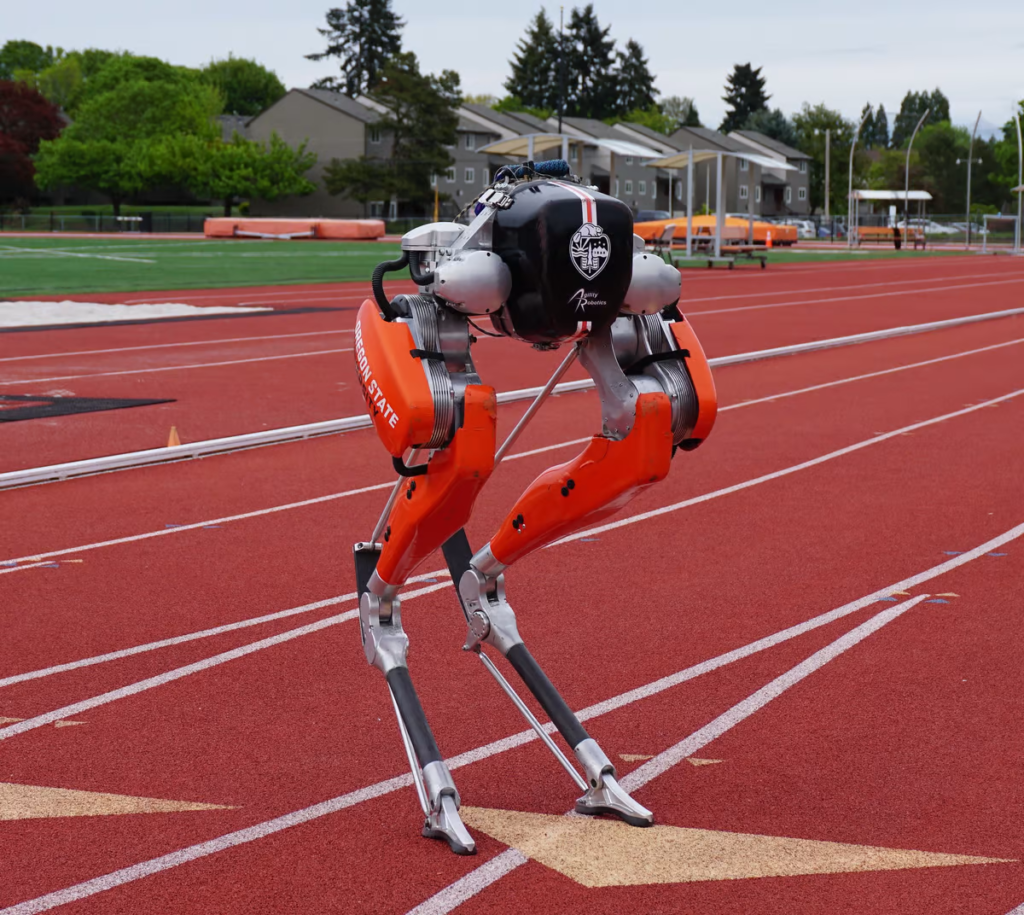By sprinting 100 meters in 24.73 seconds, the bipedal robot Cassie broke the Guinness Book of World Records. Cassie, the first bipedal robot with ostrich-like knees, is the first to employ machine learning to regulate a running stride on outdoor terrain. Cassie joins a group of running bipedal robots that includes Boston Dynamics‘ Atlas humanoid robot and Mabel, described as the world’s fastest knee-equipped bipedal robot.

Cassie was created by Agility Robotics, an Oregon State University spin-off firm, and debuted in 2017 as a platform for robotics research development. And Cassie has continued to advance substantially since then, accomplishing a 5-km jog in just over 53 minutes in 2021 (in a single charge) to show off some amazing development. Although it could have completed the task more quickly, roughly six and a half minutes were lost in troubleshooting due to overheating and losing one of its legs during a turn.
While it cannot keep up with the lightning speed of the finest athletes in the world, it is an excellent example of robotics and engineering despite the fact that it operates without cameras or external sensors.
Read More: Google unveiled an AI system that can bring us Robot Butlers
The shattering of the world record took place on May 11, 2022, but Oregon State University recently released the footage and update. Cassie raced the historic 100-meter sprint at Oregon State University’s Whyte Track and Field Center. The robot started from a standing posture and finished the sprint in the same position without tripping – something which was necessary to achieve the World Record. In order to do this, Cassie had to use two neural networks—one for moving swiftly and another for staying still—and transition between them effortlessly.
Cassie was created by Oregon State robotics professor Jonathan Hurst with the help of a 16-month, $1 million grant from the Defense Advanced Research Projects Agency, or DARPA. Since Cassie’s debut in 2017, students at Oregon State have been investigating machine learning alternatives in the Dynamic Robotics and AI Lab with assistance from artificial intelligence professor Alan Fern. They were funded by the National Science Foundation and the DARPA Machine Common Sense initiative.

According to Fern, the Dynamic Robotics and AI Lab combine physics with AI techniques that are more frequently utilized with data and simulation to produce innovative findings in robot control. A variety of academic disciplines, such as mechanical engineering, robotics, and computer science, are represented among students and researchers.
As per to Oregon State University blog, Cassie trained for a year in a simulation environment with a full week of parallelization, a computing approach that involves numerous processes and calculations at once and enables Cassie to undergo a variety of training scenarios concurrently.


